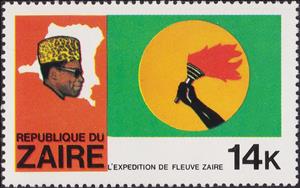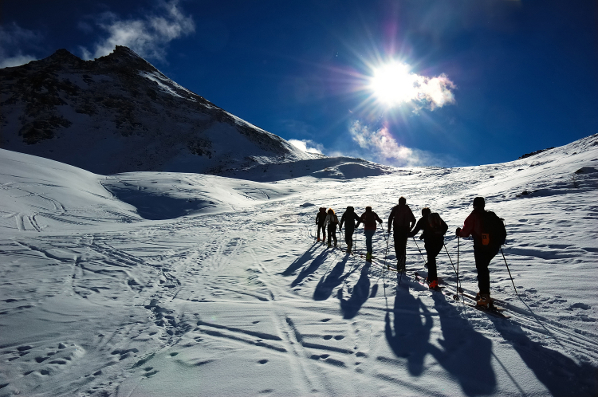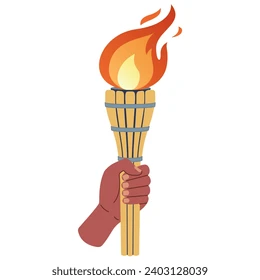Stamp: Hand with torch (Zaire 1979)
Hand with torch (Zaire 1979)
12 February (Zaire ) within release Discovery of the River Zaïre goes into circulation Stamp Hand with torch face value 14 Zairean makuta
| Stamp Hand with torch in catalogues | |
|---|---|
| Michel: | Mi:CD 593 |
| Yvert et Tellier: | Yt:CD 930 |
| Belgium: | Bel:CD 971 |
Stamp is horizontal format.
black hand holding a torchAlso in the issue Discovery of the River Zaïre:
- Souvenir Sheet - Expedition On River Zaire face value 18;
- Souvenir Sheet - The voyage of discovery of the River Zaïre face value 106;
- Stamp - Ntore-dancer face value 1;
- Stamp - Regal Sunbird (Nectarinia regia) face value 3;
- Stamp - African Elephant (Loxodonta africana) face value 4;
- Stamp - Diamond, cotton & tobacco face value 10;
- Stamp - Hand with torch face value 14;
- Stamp - Lion (Panthera leo), Water Lily face value 17;
- Stamp - Waterfalls of Inzia face value 25;
- Stamp - Fishermen of Wagenia face value 50;
- Stamp - African Elephant (Loxodonta africana) face value 4;
- Stamp - Diamond, cotton & tobacco face value 10;
- Stamp - Fishermen of Wagenia face value 50;
- Stamp - Hand with torch face value 14;
- Stamp - Lion (Panthera leo), Water Lily face value 17;
- Stamp - Regal Sunbird (Nectarinia regia) face value 3;
- Stamp - Waterfalls of Inzia face value 25;
- Souvenir Sheet - Expedition On River Zaire face value 18;
|
Data entry completed
83%
|
|
|---|---|
| Stamp Hand with torch in digits | |
| Country: | Zaire |
| Date: | 1979-02-12 |
| Size: | 52 x 33 |
| Perforation: | 14 |
| Format: | Stamp |
| Face Value: | 14 Zairean makuta |
Stamp Hand with torch it reflects the thematic directions:
A head of state (or chief of state) is the public persona that officially represents the national unity and legitimacy of a sovereign state. In some countries, the head of state is a ceremonial figurehead with limited or no executive power, while in others, the head of state is also the head of government. In countries with parliamentary governments, the head of state is typically a ceremonial figurehead that does not actually guide day-to-day government activities and may not be empowered to exercise any kind of secular political authority (e.g., Queen Elizabeth II as Head of the Commonwealth). In countries where the head of state is also the head of government, the president serves as both a public figurehead and the actual highest ranking political leader who oversees the executive branch (e.g., the President of the United States).
A map is a symbolic depiction emphasizing relationships between elements of some space, such as objects, regions, or themes. Many maps are static, fixed to paper or some other durable medium, while others are dynamic or interactive. Although most commonly used to depict geography, maps may represent any space, real or imagined, without regard to context or scale, such as in brain mapping, DNA mapping, or computer network topology mapping. The space being mapped may be two dimensional, such as the surface of the earth, three dimensional, such as the interior of the earth, or even more abstract spaces of any dimension, such as arise in modeling phenomena having many independent variables. Although the earliest maps known are of the heavens, geographic maps of territory have a very long tradition and exist from ancient times. The word "map" comes from the medieval Latin Mappa mundi, wherein mappa meant napkin or cloth and mundi the world. Thus, "map" became the shortened term referring to a two-dimensional representation of the surface of the world.
Exploration is the process of exploring, an activity which has some expectation of discovery. Organised exploration is largely a human activity, but exploratory activity is common to most organisms capable of directed locomotion and the ability to learn, and has been described in, amongst others, social insects foraging behaviour, where feedback from returning individuals affects the activity of other members of the group.
A hand is a prehensile, multi-fingered organ located at the end of the forearm or forelimb of primates such as humans, chimpanzees, monkeys, and lemurs. A few other vertebrates such as the koala (which has two opposable thumbs on each "hand" and fingerprints remarkably similar to human fingerprints) are often described as having "hands" instead of paws on their front limbs. The raccoon is usually described as having "hands" though opposable thumbs are lacking.
A torch is a stick with combustible material at one end which can be used as a light source or to set something on fire. Torches have been used throughout history, and are still used in processions, symbolic and religious events, and in juggling entertainment. In some countries, notably the United Kingdom and Australia, "torch" in modern usage is also the term for a battery-operated portable light.





